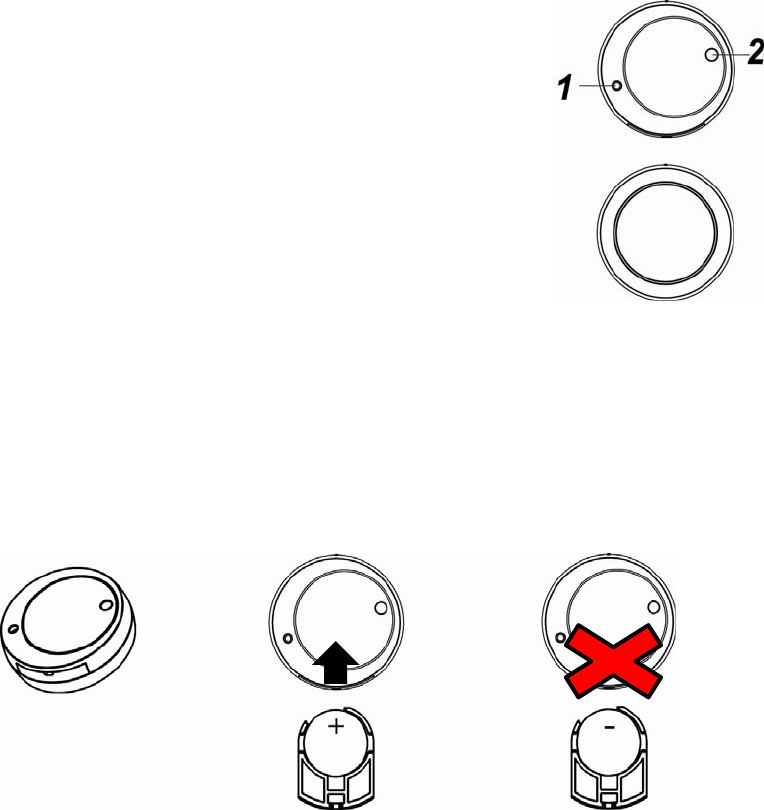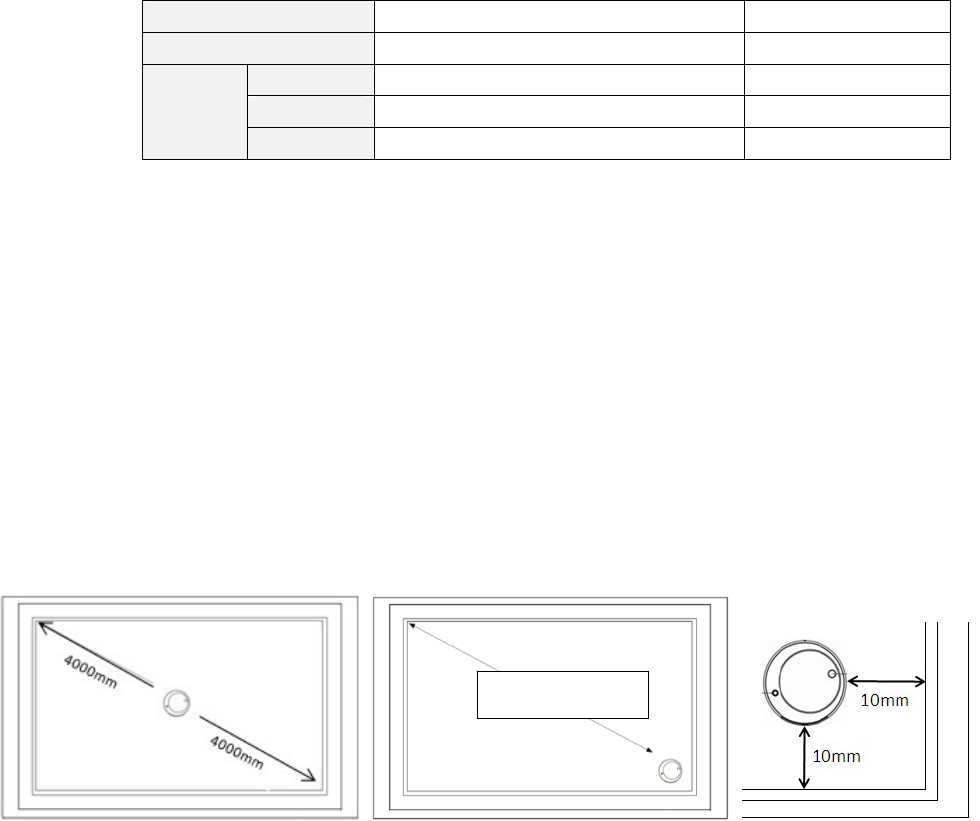Climax Technology Co SVGSF1 Shock, Vibration & Glass break sensor User Manual SVGS 1 20160804 FCCx
Climax Technology Co Ltd Shock, Vibration & Glass break sensor SVGS 1 20160804 FCCx
Users Manual

SVGS-1 Shock, Vibration & Glass break sensor
SVGS-1 is a Shock, Vibration/Glass Break Sensor. It is capable of sending wireless signals to the coordinator in the RF network
upon detection of window glass break or shock/vibration.
Parts Identification
1. Learn/Test Button
Using sharp tools such as paper clip to press the button and transmit Lear/Test code.
2. LED Indicator
The LED flashes when:
- The Learn/Test button is pressed.
- The sensor has detected shock/vibration.
Features
Battery and Low Battery Detection
The Sensor use one CR2032 3V Lithium battery as its power source. Please note: ALWAYS replace battery with the
correct size and voltage.
The battery is pre-inserted in the sensor. Pull out the battery insulator to activate battery.
The Sensor can detect if the battery is low. When the Battery is low, a low battery signal will be sent to the Control
Panel along with regular transmission.
When changing battery, use a sharp tool to open the battery slot to remove and insert battery.
When inserting batteries, the positive(+) side of the battery must face upward. NEVER insert the battery with
negative(-) side facing upward.
When the battery is inserted, the LED indicator will light up briefly.
Supervision
The Sensor will transmit a supervision signal to report its condition regularly according to the user’s setting. The factory
default interval is 30-40 minutes. The user can also press the Function Button once to transmit a supervision signal
manually.
Sensitivity
The Sensor can send alarm signal to the Control Panel according to different sensitivity levels setting. The sensitivity
levels include high, medium, and low (default). The higher the sensitivity; the easier the sensor is triggered by
shock/vibration.
To adjust the sensitivity setting:
1 Remove the battery.
2 Reinsert the battery, the LED indicator will light up briefly for about 1 second.
3 Press and hold the Learn/Test button when the LED indicator is lit up.
4 The LED will begin to flash 3 times:
I. Release the button when the LED flash for the first time to set sensitivity to Low.
II. Release the button when the LED flash for the second time to set sensitivity to Medium.
III. Release the button when the LED flash for the third time to set sensitivity to High.
The detection range of different sensitivity varies depending on the mounting surface materials.

Material Plated/Tempered/Laminated/Wired Glass Plywood
Thickness Minimum 5mm Maximum 9mm
Low(Default) 1000mm N/A
Medium 2500mm N/A
Sensitivity
High 4000mm 1000mm
Learning and Installation
Learning
1. Pull out the battery insulator power on the sensor.
2. Refer to Control Panel manual to put panel into learning mode.
3. Presses the Learn/Test button once to transmit learn code.
4. Refer to your Control Panel operation manual to complete the learn-in process.
Installation Steps
1. Before installation, put the sensor at desired mounting location.
2. Put the Control Panel into Walk Test mode
3. Press the Learn/Test button once to transmit signal for Walk Test. Proceed with installation if signal strength is
satisfactory, otherwise relocate the sensor or Control Panel and repeat Walk Test.
4. Adjust the sensor’s sensitivity as desired according to table supplied in previous section.
5. Determine the mounting location on window or wall. The sensor may be mounted at the center of or at the corner. If
one sensor is unable to cover the entire surface, use multiple sensors.
When mounting at corner, make sure to keep at least 10mm distance between the sensor and the edge of window or
wall.
6. Clean and dry the mounting location. Do not install on dirty or web surface.
7. Use the provided double side adhesive tape (Ø35mm x 8mm) to stick the sensor onto window/wall. Do not apply the
tape twice.
Installation Guideline
Always make sure to test the detection range after installation.
The adhesive tape may become loose from exposure to sunlight. Make sure to check the sensor at least once every 6
months.
Avoid mounting at location prone to shaking or vibration, which will cause false alarm.
When mounting on plywood:
1 Use only High sensitivity setting.
2 Mounting on wall next to large furniture may affect the sensor’s detection range and signal transmission range.
Make sure to test the sensor if chosen to mount at such location.
Sensor detection range is affected by double-side adhesive tape size and material. The sensitivity-range table
provided in this document is tested with factory provided adhesive tape. If different adhesive tape is used, make sure
to retest the detection range.
This device complies with Part 15 of the FCC Rules. Operation is subject to the following two conditions:
(1) This device may not cause harmful interference, and
(2) This device must accept any interference received, including interference that may cause undesired operation.
Maxrange4000mm